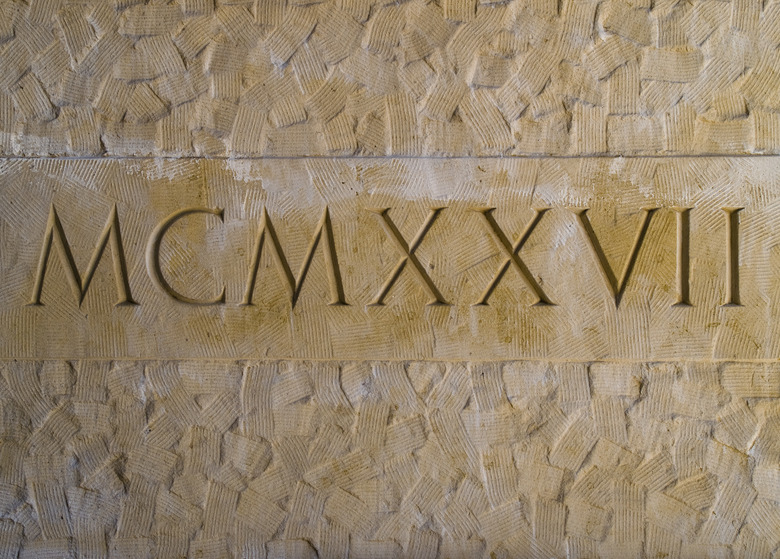How To Read Roman Numerals
Knowing Roman numerals enables you to read certain clocks and chapter titles, and the year in movie credits, for example. Roman numerals use a numbering technique based on seven letters: I, V, X, L, C, D and M. The symbol I represents a value of 1; V represents 5; X represents 10; L represents 50; C represents 100; D represents 500 and M represents 1000.
Conversion Rules
Conversion Rules
When the symbol has a greater value than the symbol after it, add the symbols, such as: XI = X + I = 10 + 1 = 11. When the symbol has a lesser value than the symbol after it, subtract the symbol with the lesser value from the symbol with the greater value: IX = X – I = 10 – 1 = 9. When the symbols have equal value, add them: XX = X + X = 10 + 10 = 20.
Roman Numerals to Decimals
Roman Numerals to Decimals
To see these rules applied to a larger number, convert MCMLXXXVI to decimal numbers. Starting with "VI," move from right to left and apply the rules. I + V + X + X + X + L + M – C + M. This works out to 1 + 5 + 10 + 10 + 10 + 50 + 1000 – 100 + 1000 = 1986. Another example is DCCLXXXIV. Starting with "IV," move from right to left and apply the rules. V – I + X + X + X + L + C + C + D. This works out to 5 – 1 + 10 + 10 +10 + 50 + 100 + 100 + 500 = 784.
Decimals to Roman Numerals
Decimals to Roman Numerals
You can also convert a decimal number to a Roman numeral. Break down the decimal number into 1,000s, 100s, 10s and ones. To convert 2014, break it down to 2000, 10 and 4. Then, convert. So, 2000 = MM; 10 = X; 4 = IV. The year 2014 works out to MMXIV.
References
Cite This Article
MLA
MaGuire, Molly. "How To Read Roman Numerals" sciencing.com, https://www.sciencing.com/read-roman-numerals-4475255/. 24 April 2017.
APA
MaGuire, Molly. (2017, April 24). How To Read Roman Numerals. sciencing.com. Retrieved from https://www.sciencing.com/read-roman-numerals-4475255/
Chicago
MaGuire, Molly. How To Read Roman Numerals last modified March 24, 2022. https://www.sciencing.com/read-roman-numerals-4475255/
